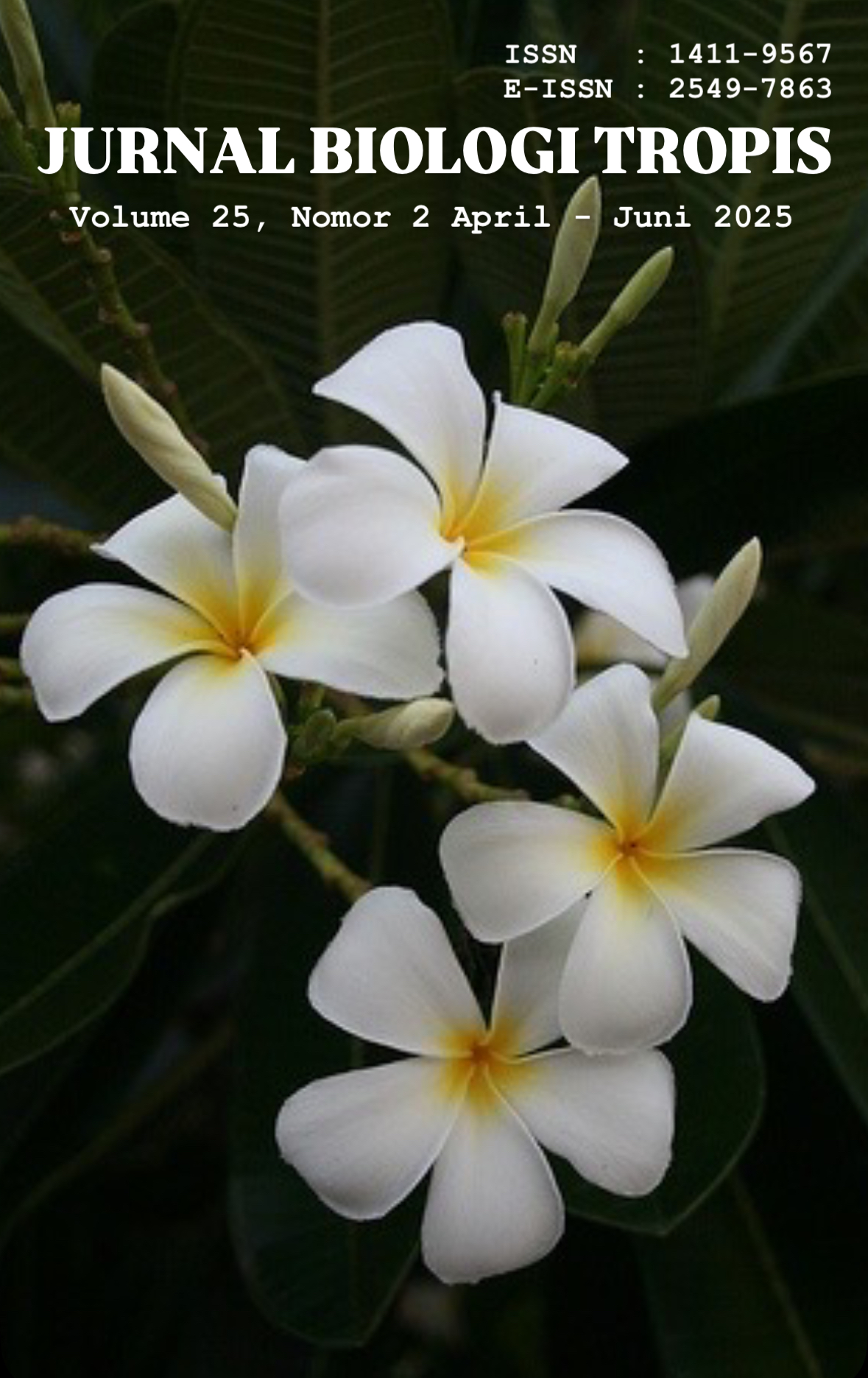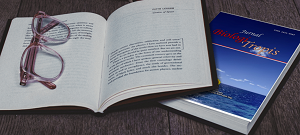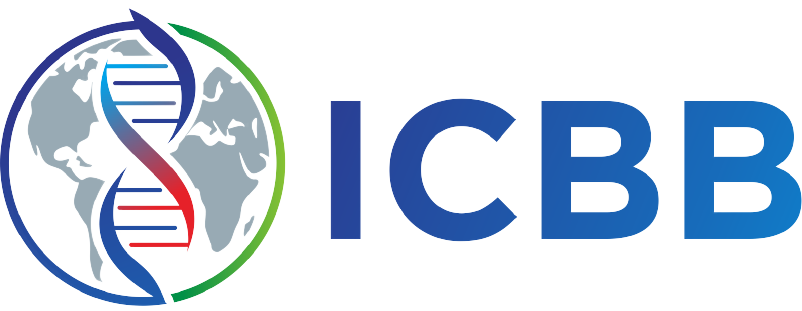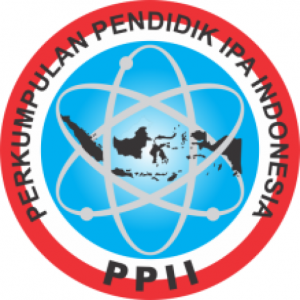Twenty-Five Years Research on Micropropagation of Stevia and Curcuma sp. and Improving Secondary Metabolites using Precursor-elicitor in vitro: A Review
Authors
Shyla Aulia Delfi , Suci Indah Putri , Putra Santoso , Muhammad IdrisDOI:
10.29303/jbt.v25i2.8882Published:
2025-05-21Issue:
Vol. 25 No. 2 (2025): April-JuniKeywords:
Curcuma, in vitro culture, elicitors, precursors, secondary metabolites, Stevia rebaudiana.Articles
Downloads
How to Cite
Downloads
Metrics
Abstract
In vitro culture technique is an effective method for plant propagation to overcome the limitations of conventional cultivation. This method is used to improve accumulation of plant secondary metabolites. The purpose of this study is to review the development of micropropagation and improving secondary metabolites in Stevia rebaudiana and Curcuma plants through the application of precursors and elicitors. The systematic literature review is used to analyse scientific articles or publications from 2000 to 2025 obtained from various online databases using relevant keywords. The results showed that Stevia was more studied when compared to Curcuma due to its high economic value, with significant impact on the study of improving accumulation of stevioside and rebaudioside production through several elicitor and precursors. In Curcuma, beside in vitro culture for mass propagation, the response to in vitro treatment of elicitor dan precursors were varied, but some precursors such as phenylalanine were shown to improve curcuminoid accumulation. In conclusion, tissue culture techniques and the use of elicitor and precursor for improving secondary metabolites accumulation have the potential impact to support mass propagation, production and sustainable optimization of plant bioactive compounds.
References
Adabiyah, R., Ratnadewi, D., & Ermayanti, T. M. (2019). Evaluasi Pertumbuhan Stevia rebaudiana Bert. Tetraploid Secara In vitro dan di Lapang untuk Produksi Steviosida dan Rebaudiosida-A. Jurnal Biologi Indonesia, 15(2), 153-165. https://doi.org/10.47349/jbi/15022019/153
Ahmad, M. A., Javed, R., Adeel, M., Rizwan, M., Ao, Q., & Yang, Y. (2020). Engineered ZnO and CuO nanoparticles ameliorate morphological and biochemical response in tissue culture regenerants of candyleaf (Stevia rebaudiana). Molecules, 25(6), 1356. https://doi.org/10.3390/molecules25061356
Ahmad, N., Khan, P., Khan, A., Usman, M., Ali, M., Fazal, H. & Abbasi, B. H. (2021). Elicitation of submerged adventitious root cultures of Stevia rebaudiana with Cuscuta reflexa for production of biomass and secondary metabolites. Molecules, 27(1), 14. https://doi.org/10.3390/molecules27010014
Alcalde M. A., Perez-Matas E., Escrich A., Cusido R. M., Palazon J., and Bonfill M. (2022). Biotic elicitors inadventitious and hairy root cultures: A review from 2010 to 2022. Molecules, 27: 5253. https://doi.org/10.3390/molecules27165253
Alvarado-Orea I. V., Paniagua-Vega D., Capataz-Tafur J.,Torres-López A., Vera-Reyes I., García-López E., and Huerta-Heredia A. A. (2020). Photoperiod and elicitors increase steviol glycosides, phenolics, and flavonoid contents in root cultures of Stevia rebaudiana. In vitro Cellular & Developmental Biology - Plant, 56: 298-306. https://doi.org/10.1007/s11627-019-10041-3
Amien, S., Aji, D. N., & Mamluatul, T. (2020). Multiplikasi cepat tunas tiga aksesi stevia secara in vitro. Kultivasi, 19(3), 1247-1253. https://doi.org/10.24198/kultivasi.v19i3.29468
Antoniazzi, D., de Souza Ferrari, M. P., Nascimento, A. B., Silveira, F. A., Pio, L. A. S.,Pasqual, M., & Magalhães, H. M. (2016). Growth regulators, DNA content and anatomyin vitro-cultivated Curcuma longa seedlings. African Journal of Biotechnology, 15(32),1711-1725. https://doi.org/10.5897/AJB2016.15445
Arlianti, T., Syahid, S. F., Kristina, N. N., & Rostiana, O. (2013). Pengaruh auksin IAA, IBA, dan NAA terhadap induksi perakaran tanaman Stevia (Stevia rebaudiana) secara in vitro. Buletin Penelitian Tanaman Rempah Dan Obat, 24(2). https://doi.org/10.21082/jlittri.v20n3.2014.122-129
As' ad, Z., Lestari, W., Maulana, A., Fenaldi, A., Jannah, M., Wahyuni, D. S. & Nurokhman, A. (2023). Kemampuan Kinetin dalam Menginduksi Tunas pada Eksplan Ibu angkai Daun Stevia (Stevia Rebaudianan B.) Melalui Kultur Jaringan. In Prosiding Seminar Nasional Pendidikan Biologi Vol. 6, No. 1, pp. 28-32. https://doi.org/10.36456/stigma.17.01.8855.99-104
Asmono, S. L., Sari, V. K., & Wardana, R. (2018). Respons pertumbuhan tunas mikro stevia (stevia rebaudiana bertoni) secara in vitro pada beberapa jenis sitokinin dan konsentrasi air kelapa. Agrin, 21(2). https://doi.org/10.20884/1.agrin.2017.21.2.395
Brijesh, H., & Ajjappala, B. (2023). Micropropagation strategies in medicinally important turmeric (Curcuma sp.): Current research and future challenges. Journal of Applied Biology and Biotechnology, 11(3), 1-8. https://doi.org/10.7324/jabb.2023.65814
Buana, A. S. (2018). Induksi kalus Stevia Rebaudiana bertoni m. dengan pemberian kombinasi ZPT NAA (naphtalene asetic acid), 2, 4-D (2, 4 diclorophenoxy asetic acid) dan BAP (benzil amino purin). G-Tech: Jurnal Teknologi Terapan, 1(2), 78-83. https://doi.org/10.33379/gtech.v1i2.272
Busaifi, R., Hirjani, H., & Lestari, R. (2021). Induksi Kalus Daun Stevia (Stevia rebaudiana) Pada Berbagai Kombinasi 2, 4D dan BAP Secara In vitro. Evolusi: Journal of Mathematics and Sciences, 5(1), 50-57.
Cahyono, E. H., & Mukhlis, S. (2020). Optimasi Pembuatan Biji Buatan Tanaman Stevia. NaCosVi: Polije Proceedings Series, 4(1), 313-319.
Carneiro, J.W.P.; Muniz, A.S.; Guedes, T.A. (1997). Greenhouse bedding plant production of Stevia rebaudiana (Bert) Bertoni. Can. J. Plant Sci, 77, 473–474. https://doi.org/10.4141/p96-166
Dimas, M., Indrawati, W., & Supriyatdi, D. (2023). Respons Planlet Stevia (Stevia rebaudiana) terhadap Penambahan berbagai Konsentrasi Thidiazuron (TDZ) dan Naphthalene Acetic Acid (NAA) secara in vitro. Jurnal Agro Industri Perkebunan, 107-114. https://doi.org/10.25181/jaip.v11i2.2849
Dingse, P., Dennie Heroike, R., Aritonang, H. F., Rizkita Rachmi, E., & Erly, M. (2006). Pengaruh Triptofan pada Pertumbuhan dan Kandungan Katarantin dari Kalus Catharanthus roseus. Jurnal Matematika dan Sains, 11(4), 111-115. http://journal.fmipa.itb.ac.id/jms/article/view/129
El-Hawaz, R. F., Bridges, W. C., & Adelberg, J. W. (2015). In vitro growth of Curcuma longa L. in response to five mineral elements and plant density in fed-batch culture systems. PLoS One, 10(4), e0118912. https://doi.org/10.1371/journal.pone.0118912
Ermayanti, T. M., Rantau, D. E., Al Hafiizh, E., & Maulana, E. (2017). Peningkatan pertumbuhan kultur tunas Stevia rebaudiana Bertoni pada media dengan peningkatan kadar vitamin dan glisin serta penggunaan jenis tutup tabung berbeda. Jurnal Biologi Indonesia, 13(2). DOI: 10.14203/jbi.v13i2.3395
Farjaminezhad, R., Bagheri, M., & Garoosi, G. (2023). Stevioside and rebaudioside A production in treated hairy root culture of Stevia rebaudiana with elicitors. Iranian Journal of Genetics and Plant Breeding, 12(1), 23-35. DOI:10.30479/IJGPB.2023.18905.1347
Felippe, G.M.; Lucas, N.M.C. Estudo da viabilidade dos frutos de Stevia rebaudiana Bert. Hoehnea. 1971, 1, 95–105.
Firdaus, W. M., & Asmono, S. L. (2021, July). Respon Pertumbuhan Planltet Stevia (Stevia rebaudiana Bertoni) pada Beberapa Konsentrasi Kinetin dengan Pencahayaan Lampu LED Merah Biru. In Agropross: National Conference Proceedings of Agriculture (pp. 162-170). DOI: 10.25047/agropross.2021.218
Ghazal, B., Fareed, A., Ahmad, N., Azra, Salmen, S. H., Ansari, M. J., & Qayyum, A. (2024). Elicitors directed in vitro growth and production of stevioside and other secondary metabolites in Stevia rebaudiana (Bertoni) Bertoni. Scientific Reports, 14(1), 14714. https://doi.org/10.1038/s41598-024-65483-6
Ghose, A. K., Abdullah, S. N. A., Md Hatta, M. A., & Megat Wahab, P. E. (2022). In vitro regeneration of stevia (Stevia rebaudiana Bertoni) and evaluation of the impacts of growth media nutrients on the biosynthesis of steviol glycosides (SGs). Agronomy, 12(8), 1957. https://doi.org/10.3390/agronomy12081957
Giordano, A. and G. Tommonaro. 2019. Curcumin and cancer. Nutrients.Vol. 11(2376): 1-20. http://doi.org/10.3390/nu11102376.
Hadiyana, A., & Syabana, M. A. (2015). Inisiasi tunas secara kultur jaringan pada stevia (Stevia rebaudiana Bertoni) dengan kosentrasi indole butyric acid (IBA) and benzyl amino purine (BAP) yang berbeda. Jurnal Agroekoteknologi, 7(2).
Hasan, Md.M., M.B. Hossain, A.Y.M.A. Azim,N.C. Ghosh, and Md.S. Reza. (2014). Application of purified curcumin as natural dyeon cotton and polyester. Int.J. Engineering & Technology. Vol 14(5) : 17-23.
Hutami, S., & Purnamaningsih, R. (2003). Perbanyakan klonal temu mangga (Curcuma mangga) melalui kultur in vitro. Buletin Plasma Nutfah, 9(1), 39-44. https://repository.pertanian.go.id/handle/123456789/2126
Iqbal, M., Aftab, Z. E. H., Anjum, T., Rizwana, H., Akram, W., Aftab, A.,& Li, G. (2024). Nano-integrated plant tissue culture to increase the rate of callus induction, growth, and curcuminoid production in curcuma longa. Plants, 13(13), 1819. https://doi.org/10.3390/plants13131819
Israâ, M., & Inoriah, E. (2020). Respon temu putih dan temu mangga dengan pemberian BA dan 2, 4-D secara in vitro. Gema Agro, 25(2), 92-102. https://doi.org/10.22225/.25.2.2608.92-102
Jadid, N., Anggraeni, S., Ramadani, M. R. N., Arieny, M., & Mas’ ud, F. (2024). In vitro propagation of Indonesian stevia (Stevia rebaudiana) genotype using axenic nodal segments. BMC Research Notes, 17(1), 45. https://doi.org/10.1186/s13104-024-06703-0
Javed, R., Mohamed, A., Yücesan, B., Gürel, E., Kausar, R., & Zia, M. (2017). CuO nanoparticles significantly influence in vitro culture, steviol glycosides, and antioxidant activities of Stevia rebaudiana Bertoni. Plant Cell, Tissue and Organ Culture (PCTOC), 131, 611-620. DOI:10.1007/s11240-017-1312-6
Javed, R., Yucesan, B., Zia, M., & Gurel, E. (2018). Elicitation of secondary metabolites in callus cultures of Stevia rebaudiana Bertoni grown under ZnO and CuO nanoparticles stress. Sugar Tech, 20, 194-201. DOI:10.1007/s12355-017-0539-1
Jeyasri R., Muthuramalingam P., Karthick K., Shin H., Choi S. H., and Ramesh M. (2023). Methyl jasmonate and salicylic acid as powerful elicitors for enhancing the production of secondary metabolites in medicinal plants: an updated review. Plant Cell, Tissue and Organ Culture (PCTOC), 153: 447-458. E-ISSN: 2278-4136
Kandoudi W., Radácsi P., Gosztola B., and Zámboriné Németh É. (2022). Elicitation of medicinal plants in vivo-is it a realistic tool? The effect of methyl jasmonate and salicylic acid on lamiaceae species. Horticulturae,8: 5. https://doi.org/10.3390/horticulturae8010005
Kazmi A., Khan M. A., Mohammad S., Ali A., and Ali H. (2019). Biotechnological production of natural calorie free steviol glycosides in Stevia rebaudiana: an update on current scenario. Current Biotechnology, 8: 70-84. DOI:10.2174/2211550108666191210100751
Khakpai F, Naseroleslami M, Moheb-Alian M, Ghanimati E, Abdollah-Pour F, Mousavi-Niri N. Intra-gastrically administration of Stevia and particularly Nano-Stevia reversed the hyperglycemia, anxiety, and memoryimpairment in streptozotocin-induced diabetic rats. Physiol Behav.2023;263:114100. https://doi.org/10.1016/j.physbeh.2023.114100.
Khan, M. A., Ali, A., Mohammad, S., Ali, H., Khan, T., Mashwani, Z. U. R., ... & Ahmad, P. (2020). Iron nano modulated growth and biosynthesis of steviol glycosides in Stevia rebaudiana. Plant Cell, Tissue and Organ Culture (PCTOC), 143, 121-130. DOI:10.1007/s11240-020-01902-6
Mahfudza, E., Mukarlina dan Linda R, 2018. Perbanyakan Tunas Pisang Cavendish (Musa acuminata L.) Secara In vitro dengan Penambahan Naphthalene Acetic Acid (NAA) dan Air Kelapa. Jurnal Protobiont, 7(1): 75-79. https://doi.org/10.26418/protobiont.v7i1.23632
Marchant, M. J., Molina, P., Montecinos, M., Guzmán, L., Balada, C., Fassio, C., & Castro, M. (2021). In vitro propagation of Easter Island Curcuma longa from rhizome explants using temporary immersion system. Agronomy, 11(11), 2121. DOI:10.3390/agronomy11112121
Marliana, M., Hafsan, H., Masriany, M., & Nur, F. (2021, November). Aplikasi ekstrak kayu manis (Cinnamomum burmanii) sebagai anti kontaminan pada kultur Stevia (S. rebaudiana) secara in vitro. In Prosiding Seminar Nasional Biologi, Vol. 7, No. 1, pp. 396-401. https://doi.org/10.24252/psb.v7i1.24711
Mirah, T., Undang, U., Sunarya, Y., & Ermayanti, T. M. (2021). Pengaruh konsentrasi sitokinin dan jenis media terhadap pertumbuhan eksplan buku stevia (Stevia rebaudiana Bert.) tetraploid. Media Pertanian, 6(1). https://doi.org/10.37058/mp.v6i1.2893
Nayak, S. (2000). In vitro multiplication and microrhizome induction in Curcuma aromatica Salisb. Plant Growth Regulation, 32(1), 41-47.
Naz, B. et al. Melatonin-Induced Stress Enhanced Biomass and Production of High-Value Secondary Cell Products in Submerged Adventitious Root Cultures of Stevia rebaudiana (Bert.). ACS Omega https://doi.org/10.1021/acsomega.3c07404 (2024)
Nuroktavianti, F. D., & Nuraini, A. (2023). Multiplikasi tunas temu putih (Curcuma zedoaria) secara in vitro dengan Beberapa Konsentrasi Zat Pengatur Tumbuh Thidiazuron. AGRONOMIKA, 21(01), 31-35. DOI:10.1023/A:1006307316393
Orellana-Paucar AM. Steviol glycosides from Stevia rebaudiana: anupdated overview of their sweetening activity, pharmacological properties, and safety aspects. Molecules. 2023;28(3):1258. https://doi.org/10.3390/molecules28031258.
Parnidi, P., & Ridhawati, A. (2020). Mikropropagasi pada tanaman Stevia rebaudiana (Bertoni). Buletin Tanaman Tembakau, Serat dan Minyak Industri, 12(1), 45-53. DOI: 10.21082/btsm.v12n1.2020.45-53
Pemanasari, Y. (2015). Pengaruh Asam Salisilat dan Fenilalanin Terhadap Kandungan Total Asam Fenol Pada Kultur Suspensi Sel Moringa oleifera Lam. Institut Teknologi Sepuluh Nopember. DOI: repository.its.ac.id:71950
Phillips, G. C., & Garda, M. (2019). Plant tissue culture media and practices: an overview. In vitro Cellular & Developmental Biology-Plant, 55(3), 242-257. https://doi.org/10.1007/s11627-019-09983-5
Pistelli, L., Bertoli, A., Gelli, F., Bedini, L., Ruffoni, B., & Pistelli, L. (2012). Production of Curcuminoids in Different in vitro Organs of Curcuma longa. Natural Product Communications, 7(8), https://doi.org/10.1177/1934578X1200700819
Pranata, M. G., Yunus, A., & Pujiasmanto, B. (2015). Pengaruh konsentrasi naa dan air kelapa terhadap multiplikasi temulawak (curcuma xanthorrizha roxb.) secara in vitro. Caraka Tani: Journal of Sustainable Agriculture, 30(2), 62-68. DOI:10.20961/carakatani.v30i2.11890
Prasath, D., Kandiannan, K., Leela, N. K., Aarthi, S., Sasikumar, B., & Babu, K. N. (2018). Turmeric: Botany and production practices. Horticultural Reviews, 46, 99-184. https://doi.org/10.1002/9781119521082.ch3
Rahma, D. A. (2020). Pengaruh Pemberian BAP dengan Cahaya LED Merah-Biru dan Putih Terhadap Multiplikasi Tunas Stevia (Stevia rebaudiana B.) Secara In vitro (Doctoral dissertation, Politeknik Negeri Jember).
Rahman, A. T., Rafia, J., Jethro, A., Santoso, P., Kharisma, V. D., Murtadlo, A. A. A., Purnamasari, D., Soekamto, N. H., Ansori, A. N. M., Kuswati, Mandeli, R. S., Aledresi, K. A. M. S., Yusof, N. F. M., Jakhmola, V., Rebezov, M., Zainul, R., Dobhal, K., Parashar, T., Ghifari, M. A., & Sari, D. A. P. (2022). In silico study of the potential of endemic Sumatra wild turmeric rhizomes (Curcuma Sumatrana: Zingiberaceae) as anti-cancer. Pharmacognosy Journal, 14(6), 806-812. https://doi.org/10.5530/pj.2022.14.171
Raihana, R., Faridah, Q. Z., Julia, A. A., Abdelmageed, A. H. A., & Kadir, M. A. (2011). In vitro culture of Curcuma mangga from rhizome bud. Journal of Medicinal Plant Research, 5(28), 6418-6422. DOI:10.5897/JMPR11.673
Rakesh B., and Praveen N. (2022). Elicitor and precursor induced approaches to enhance the in vitro production of L-DOPA from cell cultures of Mucuna pruriens. Industrial Crops and Products, 188: 115735. DOI:10.1080/21553769.2011.649188
Rasouli D., Werbrouck S., Maleki B., Jafary H., and Schurdi-Levraud V. (2021). Elicitor-induced in vitro shoot multiplication and steviol glycosides production in Stevia rebaudiana. South African Journal of Botany, 137: 265-271. https://doi.org/10.1016/j.sajb.2020.10.023
Rattan S., and Warghat A. R. (2023). Comparative analysis of salidroside and rosavin accumulation and expression analysis of biosynthetic genes in salicylic acid and methyl jasmonate elicited cell suspension culture of Rhodiola imbricata (Edgew.). Industrial Crops and Products, 198: 116667. DOI:10.1016/j.indcrop.2023.116667
Rinanto, Y. (2009). Induksi Sintesa Kurkuminoid dalam Kalus Temulawak (Curcuma xanthorriza, Roxb) Akibat Pengaruh Hormon 2, 4-D Dan Fenilalanin Pada Media Kultur. Jurnal Farmasi Indonesia, 6(1), 1-8.
Rohmah, D. I. (2014). Pengaruh Berbagai Konsentrasi Dichlorophenoxy Acetic Acid terhadap Kecepatan Induksi dan Viabilitas Kalus Daun Stevia (Stevia rebaudiana) pada Medium New Phalaenopsis secara In vitro. LenteraBio: Berkala Ilmiah Biologi, 3(1). http://ejournal.unesa.ac.id/index.php/lenterabio/article/view/7087
Romadhoni, N. A., Suminar, E., Nuraini, A., & Mubarok, S. (2019). Pengujian Multiplikasi Eksplan Kunyit Dengan Penambahan Auksin Dan Sitokinin Pada Modifikasi Media (Multiplication Examination Of Turmeric Explants Using Auxin And Cytokinin To Modified Media). Jurnal Penelitian Saintek, Vol. 24, Nomor 1. DOI:10.21831/jps.v24i1.19503
Rustikawati, R., Herison, C., Inoriah, E., & Dwisari, V. (2021). Effect of BAP (6-Benzyl Aminopurine) on in vitro shoot growth of curcumas. AGRITROPICA: Journal Of Agricultural Sciences, 4(1), 82-92. https://doi.org/10.31186/j.agritropica.4.1.82-92
S
alehi B, López MD, Martínez-López S, Victoriano M, Sharifi-Rad J, Martorell M, Rodrigues CF, Martins N. (2019). Stevia rebaudiana Bertoni bioactive effects: from in vivo to clinical trials towards future therapeutic approaches. Phytotherapy Res 33(11):2904–2917. DOI: 10.1002/ptr.6478
Samanhudi, S., Yunus, A., Pujiasmanto, B., & Saras, A. (2017). In vitro propagation of temulawak (Curcuma xanthorrhiza Roxb.). Jurnal Jamu Indonesia, 2(2), 37-42. DOI:10.29244/jji.v2i2.30
Saptari, R. T. (2016). Modifikasi sistem kultur in vitro untuk meningkatkan vigor planlet stevia (Stevia rebaudiana Bert.) plantlets]. Menara Perkebunan, 84(2).: http://dx.doi.org/10.22302/iribb.jur.mp.v84i2.211
Shahinozzaman, M., Ferdous, M., Faruq, M., Azad, M., & Amin, M. (2013). Micropropagation of black turmeric (Curcuma caesia Roxb.) through in vitro culture of rhizome bud explants. Journal of Central European Agriculture. DOI:10.5513/JCEA01/14.3.1289
Sharma S, Gupta S, Kumari D, Kothari SL, Jain R, Kachhwaha S. Exploring plant tissue culture and steviol glycosides production in Stevia rebaudi-ana (Bert.) Bertoni: a review. Agriculture. 2023;13(2):475. https://doi.org/10.3390/agriculture13020475.
Shukla, S. K., Shukla, S., Koche, V., & Mishra, S. K. (2007). In vitro propagation of tikhur (Curcuma angustifolia Roxb.): a starch yielding plant.
Sichanova, M., Geneva, M., Petrova, M., Miladinova-Georgieva, K., Kirova, E., Nedev, T., & Trendafilova, A. (2022). Improvement of Stevia rebaudiana Bertoni in vitro propagation and steviol glycoside content using aminoacid silver nanofibers. Plants, 11(19), 2468. https://doi.org/10.3390/plants11192468
Simlat M., Ptak A., Jaglarz A., Szewczyk A., Dziurka M.,and Gurgul A. (2023). Seeds of Stevia rebaudiana bertoni as a source of plant growth-promoting endophytic bacteria with the potential to synthesize rebaudioside a. International Journal of Molecular Sciences, 24: 2174. https://doi.org/10.3390/ijms24032174
Sulistyowati, E. T., Isnaturrokhmi, I., Ihsani, D. N., Putra, A. R. J. S., Fernanda, J. D., Rahman, T., & Suwandi, T. (2024). Pengaruh Hormon Sitokinin Jenis Benzil Aminopurine (Bap) Terhadap Tunas Kunyit (Curcuma longa). Borneo Journal of Biology Education (BJBE), 6(1), 1-7. https://doi.org/10.35334/bjbe.v6i1.5176
Suminar, E., Sobarna, D. S., Mubarok, S., Sulistyaningsih, S., & Setiawan, A. (2021). Pertumbuhan tunas kunyit tinggi kurkumin pada berbagai jenis sitokinin dan auksin secara in vitro. Kultivasi, 20(1), 42-46. https://jurnal.unpad.ac.id/kultivasi/article/view/30705
Syabana, M. A., Marianingsih, P., Hermita, N., & Rohimah, I. (2017). Induksi dan pertumbuhan kalus tanaman stevia (Stevia rebaudiana Bertoni M.) dengan perbedaan konsentrasi PEG (Polyethylene Glycol) pada kondisi pencahayaan secara in vitro. Vitro. Biodidaktika, 12(2), 57-68. p-ISSN: 1907-087X; e-ISSN: 2527-4562
Syukur, C. (2004). Temu Putih Tanaman Obat Anti Kanker. Jakarta: PT. Penebar Swadaya. ISBN/ISSN 979-489-720-5
Tarigan, R. A., Khairunnisa, S. L., Syafitra, A. A., & Noer, Z. (2024). Respon Pemberian Konsentrasi BAP Terhadap Pertumbuhan Stevia Rebaudiana Secara In vitro. MEDIAGRO, 20(3). DOI:10.31942/mediagro.v20i3.11728
Tavakoli H, Tavakoli N, Moradi F (2019) The effect of the elicitors on the steviol glycosides biosynthesis pathway in Stevia rebaudiana. Funct Plant Biol 46(9):787–795. DOI: 10.1071/FP19014
Tejavathi, D. H., & Sujatha, B. S. (2016). In vitro propagation of Curcuma karnatakensis-an endemic taxon. International Journal of Tropical Agriculture, Vol. 34, No. 6, 1755-1760 ref. 36. http://serialsjournals.com/serialjournalmanager/pdf/1483765098.pdf
Thakur K., Ashrita, Sood A., Kumar P., Kumar D., and Warghat A. R. (2021). Steviol glycoside accumulation and expression profiling of biosynthetic pathway genes in elicited in vitro cultures of Stevia rebaudiana. In vitro Cellular & Developmental Biology - Plant, 57:214-224. DOI: 10.1007/s11627-020-10151-3
Thakur, M., R.Virk, P.S. Sangha, V. Saxena. (2019). The effect of turmeric on alxheimer’s patients. J.Food Sci Nutr Res. Vol. 2(4): 347-353. doi: 10.4103/0974-8520.110524
Van Tan, P. (2016). Micropropagation of Curcuma sp., a threatened medicinal plant. Advances in Bioscience and Biotechnology, 7(10), 418. DOI: 10.4236/abb.2016.710040
Vutakuri, N. (2018). Curcumin: Breast cancer therapeutic agent to replace allopatic treatments with extensive side effects. J.Young Investigator. Vol. 35(2):39-44.
Waman, A. A., Bohra, P., Karthika Devi, R., & Pixy, J. (2021). In vitro multiplication protocol for Curcuma mangga: Studies on carbon, cytokinin source and explant size. Journal of Horticultural Sciences, 16(1), 69-76. DOI: https://doi.org/10.24154/jhs.v16i1.1101
Wiryosoendjoyo, K., & Supriyadi, S. (2014). Identification of Stevioside on Stevia Leaf Callus Grown by 2, 4-D and Kinetin. Jurnal Farmasi Indonesia, 11(1), 1-7.
Yachya, A., Nurokhman, A., & As’ad, Z. (2024). Pengaruh Pemberian Kinetin Terhadap Induksi Tunas Pada Eksplan Stevia (Stevia Rebaudiana B.) Melalui Kultur Jaringan. Stigma: Jurnal Matematika dan Ilmu Pengetahuan Alam Unipa, 17(01), 13-18.
Yadav, D., Gaurav, H., Yadav, R., Waris, R., Afzal, K., & Shukla, A. C. (2023). A comprehensive review on soft rot disease management in ginger (Zingiber officinale) for enhancing its pharmaceutical and industrial values. Heliyon 9(7), 1-18. https://doi.org/10.1016/j.heliyon.2023.e18337
Yoosumran, V., Saetiew, K., Ruamrungsri, S., Akarapisarn, A., & Teerarak, M. (2022). Micropropagation of young inflorescence curcuma hybrid in vitro. http://www.ijat-aatsea.com/
Yulizar, D. R., Noli, Z. A., & Idris, M. (2014). Induksi tunas kunyit putih (Curcuma zedoaria Roscoe) pada media MS dengan penambahan berbagai konsentrasi BAP dan sukrosa secara in vitro. Jurnal Biologi UNAND, 3(4). DOI: https://doi.org/10.25077/jbioua.3.4.%25p.2014
Yusnita. (2003). Kultur jaringan Cara Memperbanyak secara Efisien. Jakarta: Agromedia Pustaka.
Ziraluo, Y. P. B. (2021). Metode perbanyakan tanaman ubi jalar ungu (Ipomea batatas poiret) dengan teknik kultur jaringan atau stek planlet. Jurnal inovasi penelitian, 2(3), 1037–1046. DOI: https://doi.org/10.47492/jip.v2i3.819
License
Copyright (c) 2025 Shyla Aulia Delfi, Suci Indah Putri, Putra Santoso, Muhammad Idris

This work is licensed under a Creative Commons Attribution 4.0 International License.

Jurnal Biologi Tropis is licensed under a Creative Commons Attribution 4.0 International License.
The copyright of the received article shall be assigned to the author as the owner of the paper. The intended copyright includes the right to publish the article in various forms (including reprints). The journal maintains the publishing rights to the published articles.
Authors are permitted to disseminate published articles by sharing the link/DOI of the article at the journal. Authors are allowed to use their articles for any legal purposes deemed necessary without written permission from the journal with an acknowledgment of initial publication to this journal.


























